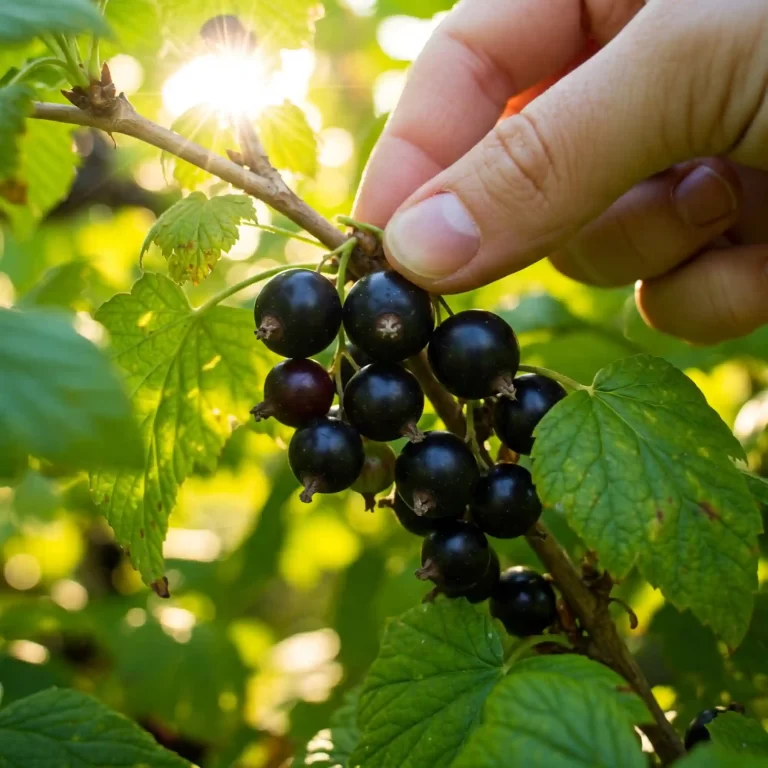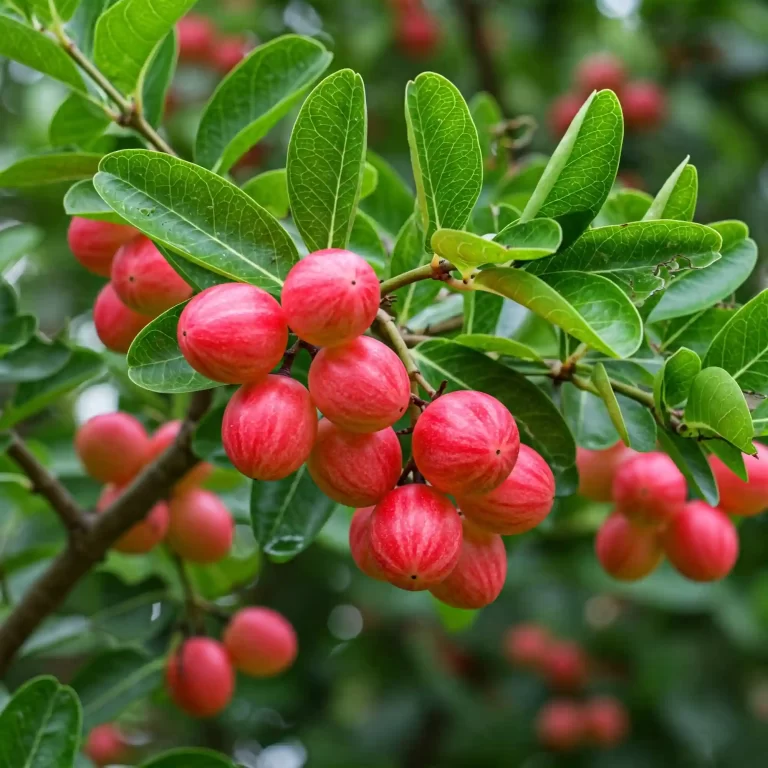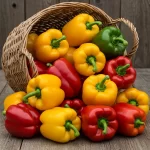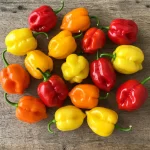You might have already experienced the frustration of seeing your plants suffer due to the cold. The sight of wilting leaves and slow growth can be disheartening, especially after putting in so much effort to nurture them. The fear of losing your beloved plants to frost can be overwhelming, making you feel helpless and unsure of what steps to take next.
The good news is that there are effective solutions to this problem. By using the right heaters for your plants, you can create a warm and stable environment that promotes healthy growth even during the coldest months. In this comprehensive guide, I’ll walk you through the best heaters for plants, how to choose the right one, and tips for installation and safety. Let’s dive in and ensure your plants stay warm and happy this winter!
Why You Need Heaters for Plants
Keeping your plants warm during the winter is crucial for their survival and growth. Cold temperatures can cause significant stress to plants, leading to various issues such as slowed growth, nutrient deficiencies, and increased susceptibility to diseases. Here are some key reasons why you need heaters for your plants:
- Prevent Frost Damage: Frost can cause severe damage to plants, especially those that are not frost-tolerant. Heaters help maintain a consistent temperature, preventing frost from forming on your plants.
- Promote Healthy Growth: Plants require a certain temperature range to grow optimally. Heaters ensure that your plants stay within this range, promoting healthy growth and development.
- Extend Growing Season: With the right heating solutions, you can extend the growing season for your plants. This is particularly beneficial for gardeners who want to grow plants that are not native to their climate.
- Protect Sensitive Plants: Some plants are more sensitive to cold temperatures than others. Heaters provide the necessary warmth to protect these delicate plants from the harsh winter conditions.
- Improve Germination Rates: For those starting seeds, maintaining a warm environment is essential for successful germination. Heat mats and other heating solutions can significantly improve germination rates.
Types of Heaters for Plants
When it comes to choosing heaters for your plants, there are several options available. Each type of heater has its own advantages and is suitable for different situations. Here are the main types of heaters for plants:
Electric Heaters
Electric heaters are a popular choice for greenhouses and indoor gardening. They are easy to use, energy-efficient, and provide consistent heat. Here are some benefits of electric heaters:
- Ease of Use: Electric heaters are simple to operate and require minimal maintenance.
- Energy Efficiency: Many electric heaters are designed to be energy-efficient, helping you save on electricity costs.
- Consistent Heat: Electric heaters provide a steady and reliable source of heat, ensuring your plants stay warm.
Propane Heaters
Propane heaters are another effective option for heating greenhouses and outdoor plants. They are portable and can provide a significant amount of heat. Here are some advantages of propane heaters:
- Portability: Propane heaters are portable and can be easily moved around as needed.
- High Heat Output: These heaters can produce a large amount of heat, making them suitable for larger spaces.
- Independence from Electricity: Propane heaters do not rely on electricity, making them a good option for areas with unreliable power supply.
Seedling Heat Mats
Seedling heat mats are specifically designed for starting seeds and young plants. They provide gentle, consistent heat to promote germination and early growth. Here are some benefits of seedling heat mats:
- Promote Germination: Heat mats create an optimal environment for seed germination.
- Easy to Use: These mats are simple to set up and use, making them ideal for beginners.
- Cost-Effective: Seedling heat mats are generally affordable and energy-efficient.
Solar Heaters
Solar heaters are an eco-friendly option for heating greenhouses. They use solar energy to generate heat, reducing your reliance on electricity or propane. Here are some advantages of solar heaters:
- Eco-Friendly: Solar heaters use renewable energy, making them environmentally friendly.
- Cost Savings: By using solar energy, you can save on electricity or propane costs.
- Sustainable: Solar heaters provide a sustainable heating solution for your greenhouse.
Top 10 Heaters for Plants
Now that we’ve covered the different types of heaters, let’s take a closer look at some of the best heaters for plants available on the market. These heaters have been selected based on their performance, user reviews, and overall value.
1. Bio Green Palma Greenhouse Heater
The Bio Green Palma Greenhouse Heater is a top choice for many gardeners. It features a digital thermostat, lightweight design, and auto-shutoff feature. This heater is perfect for small greenhouses up to 120 square feet.
- Features: Digital thermostat, lightweight design, auto-shutoff.
- Benefits: Provides consistent heat, easy to use, energy-efficient.
- Ideal For: Small greenhouses, indoor gardening.
2. Dr. Infrared Heater DR-218
The Dr. Infrared Heater DR-218 is ideal for small to medium-sized greenhouses. It is efficient, easy to use, and provides a reliable source of heat.
- Features: High efficiency, easy to use, reliable heat source.
- Benefits: Energy-efficient, durable, user-friendly.
- Ideal For: Small to medium-sized greenhouses, indoor gardening.
3. Mr. Heater Little Buddy Heater
The Mr. Heater Little Buddy Heater is a portable propane heater that provides consistent warmth. It is great for larger spaces and outdoor use.
- Features: Portable, propane-powered, consistent heat.
- Benefits: High heat output, portable, easy to use.
- Ideal For: Larger spaces, outdoor gardening.
4. Vivosun Seedling Heat Mat
The Vivosun Seedling Heat Mat is perfect for starting seeds. It provides gentle, consistent heat to promote germination and early growth.
- Features: Gentle heat, easy to use, promotes germination.
- Benefits: Cost-effective, energy-efficient, ideal for seedlings.
- Ideal For: Seed starting, young plants.
5. Comfort Zone Ceiling-Mounted Heater
The Comfort Zone Ceiling-Mounted Heater is suitable for larger greenhouses. It is powerful, energy-efficient, and can be mounted on the ceiling to save space.
- Features: Ceiling-mounted, powerful, energy-efficient.
- Benefits: Saves space, high heat output, durable.
- Ideal For: Larger greenhouses, indoor gardening.
6. Lasko Ceramic Heater
The Lasko Ceramic Heater is a compact and portable option for heating small spaces. It is energy-efficient and provides consistent heat.
- Features: Compact design, portable, energy-efficient.
- Benefits: Easy to use, cost-effective, reliable heat source.
- Ideal For: Small spaces, indoor gardening.
7. Dyna-Glo Propane Heater
The Dyna-Glo Propane Heater is a high-capacity heater that is perfect for larger greenhouses and outdoor use. It provides a significant amount of heat and is easy to use.
- Features: High capacity, propane-powered, easy to use.
- Benefits: High heat output, portable, durable.
- Ideal For: Larger greenhouses, outdoor gardening.
8. Hydrofarm Seedling Heat Mat
The Hydrofarm Seedling Heat Mat is another excellent option for starting seeds. It provides gentle, consistent heat to promote germination and early growth.
- Features: Gentle heat, easy to use, promotes germination.
- Benefits: Cost-effective, energy-efficient, ideal for seedlings.
- Ideal For: Seed starting, young plants.
9. King Electric Greenhouse Heater
The King Electric Greenhouse Heater is a durable and high-performance heater. It is suitable for larger greenhouses and provides consistent heat.
- Features: Durable design, high performance, consistent heat.
- Benefits: Reliable, energy-efficient, easy to use.
- Ideal For: Larger greenhouses, indoor gardening.
10. DeWalt Portable Propane Heater
The DeWalt Portable Propane Heater is a robust and portable heater that is perfect for outdoor use. It provides a significant amount of heat and is easy to use.
- Features: Portable, propane-powered, robust design.
- Benefits: High heat output, durable, easy to use.
- Ideal For: Outdoor gardening, larger spaces.
How to Choose the Right Heater for Your Plants
Choosing the right heater for your plants depends on several factors, including the type of plants you have, the size of your greenhouse, and your budget. Here are some tips to help you make the right choice:
- Consider the Type of Plants: Different plants have different temperature requirements. Make sure to choose a heater that can maintain the optimal temperature for your specific plants.
- Greenhouse Size: The size of your greenhouse will determine the capacity of the heater you need. Larger greenhouses require more powerful heaters to maintain a consistent temperature.
- Energy Efficiency: Look for heaters that are energy-efficient to save on electricity or propane costs. Energy-efficient heaters are also better for the environment.
- Budget: Consider your budget when choosing a heater. While some heaters may have a higher upfront cost, they might save you money in the long run due to their energy efficiency.
- Heater Capacity: Ensure the heater you choose has the capacity to heat the entire greenhouse. Check the heater’s specifications to see the area it can effectively cover.
- Safety Features: Look for heaters with built-in safety features such as auto-shutoff, overheat protection, and tip-over switches. These features help prevent accidents and ensure safe operation.
- Ease of Use: Choose a heater that is easy to set up and operate. User-friendly controls and clear instructions can make a big difference in your overall experience.
- Durability: Invest in a heater that is built to last. Durable heaters are often more reliable and require less maintenance over time.
Installation and Safety Tips
Proper installation and safety precautions are essential when using heaters for plants. Here are some tips to help you set up your heater safely and effectively:
- Proper Placement: Place the heater in a location where it can evenly distribute heat throughout the greenhouse. Avoid placing it too close to plants or flammable materials.
- Ventilation: Ensure proper ventilation in your greenhouse to prevent the buildup of harmful gases, especially when using propane heaters. Good ventilation also helps maintain a healthy environment for your plants.
- Use Thermostats: Use thermostats to monitor and control the temperature in your greenhouse. This helps maintain a consistent temperature and prevents overheating.
- Regular Maintenance: Perform regular maintenance on your heaters to ensure they are functioning properly. Clean the heaters and check for any signs of wear or damage.
- Safety Precautions: Follow the manufacturer’s safety instructions and guidelines. Use heaters with built-in safety features and never leave them unattended for long periods.
- Fire Hazards: Be aware of potential fire hazards. Keep flammable materials away from the heater and ensure it is placed on a stable, non-flammable surface.
DIY Heating Solutions for Plants
If you’re looking for cost-effective and creative ways to keep your plants warm, consider these DIY heating solutions:
- Incandescent Flood Lamps: Incandescent flood lamps can provide additional warmth to your plants. Place them strategically around your greenhouse to create a warm environment.
- Christmas Lights: Stringing Christmas lights around your plants can help protect them from frost. The lights generate a small amount of heat, which can be enough to keep the temperature above freezing.
- Homemade Greenhouse Insulation: Insulate your greenhouse using bubble wrap or other insulating materials. This helps retain heat and reduces the need for additional heating.
- Water Barrels: Place water barrels in your greenhouse to absorb heat during the day and release it at night. This can help maintain a more stable temperature.
- Compost Piles: Create compost piles inside your greenhouse. The decomposition process generates heat, which can help keep the greenhouse warm.
FAQs
Keeping plants warm in winter involves using heaters, insulating the greenhouse, and employing DIY heating solutions. Heaters provide consistent warmth, while insulation helps retain heat. DIY solutions like incandescent lamps and Christmas lights can also be effective.
Some of the best energy-efficient heaters for greenhouse plants include the Bio Green Palma Greenhouse Heater, Dr. Infrared Heater DR-218, and Comfort Zone Ceiling-Mounted Heater. These heaters are designed to provide consistent heat while minimizing energy consumption.
Propane heaters can be safe for indoor plants if used correctly. Ensure proper ventilation to prevent the buildup of harmful gases and follow the manufacturer’s safety guidelines. Look for propane heaters with built-in safety features like auto-shutoff and overheat protection.
Choosing the right heater for your greenhouse involves considering factors such as the type of plants, greenhouse size, energy efficiency, budget, heater capacity, safety features, ease of use, and durability. Assess your specific needs and select a heater that meets those requirements.
While regular household heaters can be used for plants, they may not be the most efficient or safe option. It’s better to use heaters specifically designed for greenhouses and plants, as they are built to provide the right amount of heat and often come with safety features.
Conclusion
In conclusion, choosing the right heater for your plants is essential for maintaining their health and promoting growth during the colder months. By understanding the different types of heaters available and considering factors such as plant type, greenhouse size, and energy efficiency, you can select the best heater for your needs. Additionally, proper installation and safety precautions are crucial to ensure the safe and effective operation of your heater. With the right heating solutions, you can keep your plants warm and thriving all winter long.







